
The Evolution of Modern Fandom
What comes to mind when you think of fans? Screaming Swifties at a Taylor Swift concert overwhelming the merch booths? Marvel maniacs at Comic-Con who’ve no doubt spent hours on their cosplay? Streetwear aficionados lining up outside the Off-White store for a limited-edition sneaker collab?
Whatever you picture, one thing is clear: Being a fan is fun and gives people purpose.
Once characterized by stereotypes of insular superfans and niche nerds, being a fan has never been easier or more rewarding. There are so many things to be passionate about, even if you don’t have the time or resources to get too deep into them.
Modern fandom has an option for every level of fan and opens a new world of ways to engage with whatever it is you love. That could be the simple joy of sharing a sports meme with friends ahead of kickoff or participating in the classic, yet more involved, ritual of face-painting your team colors for every game.
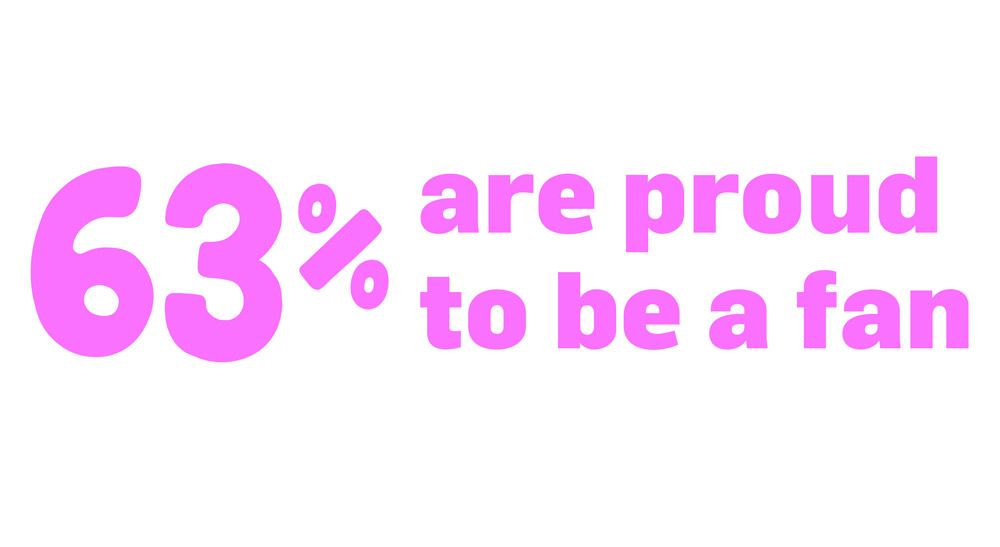
Modern fandom brings the excitement and sense of belonging that fans have enjoyed for decades, if not centuries, to larger audiences across the world.
But this evolution didn’t happen overnight. Digital channels have empowered people to pursue their passions and connect with their communities in more ways than ever. People have always defined themselves by what they like, but today they can do so through a far-reaching online persona where what was once considered niche interests are valued. Simply put: People are emboldened by their varied interests. This has rewritten the DNA of fans and lowered the bar for entry to fandoms and participation in fan communities.
Fandoms have entered the mainstream—71% of surveyed respondents agree that “being a fan of something is cool,” according to the "Anatomy of Hype" report from Twitch Ads, Amazon Ads and Crowd DNA. This creates an opportunity for marketers to join a conversation once reserved for a select few brands and to engage with fans, become part of their passions and build affinity with an important audience.
That said, to truly connect with today’s fans, marketers need to figure out how they can most authentically fit within the fabric of modern fandoms. Keep scrolling for insights about the new fundamentals of fandoms and advice on how to get in on the hype.




The Evolution of Modern Fandom
What comes to mind when you think of fans? Screaming Swifties at a Taylor Swift concert overwhelming the merch booths? Marvel maniacs at Comic-Con who’ve no doubt spent hours on their cosplay? Streetwear aficionados lining up outside the Off-White store for a limited-edition sneaker collab?
Whatever you picture, one thing is clear: Being a fan is fun and gives people purpose.
Once characterized by stereotypes of insular superfans and niche nerds, being a fan has never been easier or more rewarding. There are so many things to be passionate about, even if you don’t have the time or resources to get too deep into them.
Modern fandom has an option for every level of fan and opens a new world of ways to engage with whatever it is you love. That could be the simple joy of sharing a sports meme with friends ahead of kickoff or participating in the classic, yet more involved, ritual of face-painting your team colors for every game.

Modern fandom brings the excitement and sense of belonging that fans have enjoyed for decades, if not centuries, to larger audiences across the world.
But this evolution didn’t happen overnight. Digital channels have empowered people to pursue their passions and connect with their communities in more ways than ever. People have always defined themselves by what they like, but today they can do so through a far-reaching online persona where what was once considered niche interests are valued. Simply put: People are emboldened by their varied interests. This has rewritten the DNA of fans and lowered the bar for entry to fandoms and participation in fan communities.
Fandoms have entered the mainstream—71% of surveyed respondents agree that “being a fan of something is cool,” according to the "Anatomy of Hype" report from Twitch Ads, Amazon Ads and Crowd DNA. This creates an opportunity for marketers to join a conversation once reserved for a select few brands and to engage with fans, become part of their passions and build affinity with an important audience.
That said, to truly connect with today’s fans, marketers need to figure out how they can most authentically fit within the fabric of modern fandoms. Keep scrolling for insights about the new fundamentals of fandoms and advice on how to get in on the hype.

Fandom has moved beyond password-only chat groups and is much more accessible than it used to be.
And with a new era of fandom comes a new kind of fan: the fluid fan. Fluid fans are people whose interests and devotion cross between a variety of fandoms. They don’t define themselves by a single passion, but recognize and embrace that there are just as many ways to express their fandom as there are things they can be a fan of.
To connect with fandoms, brands need to understand fluid fans first.
Fluid fans don’t follow the flock. Instead of devoting themselves to one fandom community, they turn to multiple fandoms to fulfill different parts of their dynamic identity. And this behavior is becoming the status quo. When asked, people stated that they maintained an average of 7.6 different passions (selected from a list of 10) that they either like or love, according to the "Anatomy of Hype.”
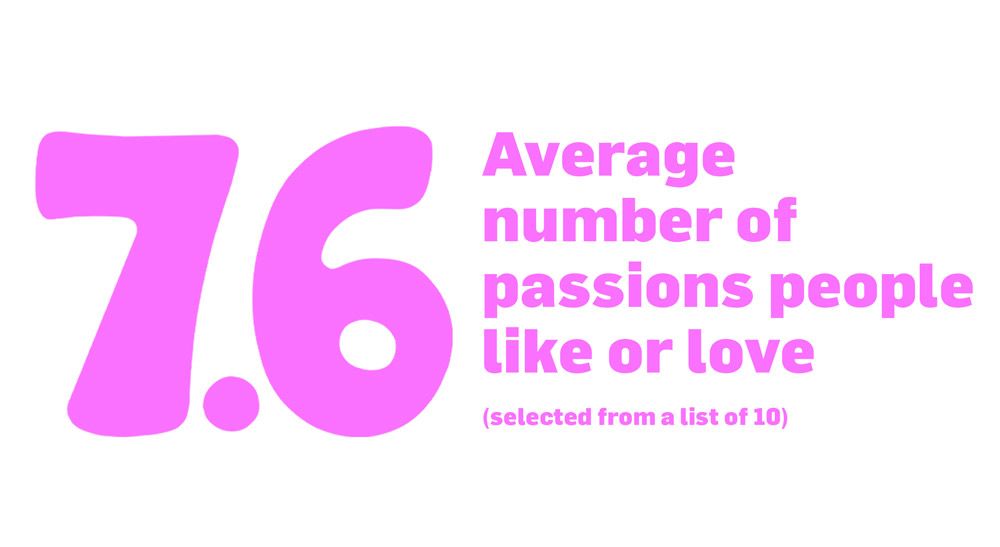
So, what does this mean for marketers?
Fluid fans’ engagement—broad, yet still passionate—opens the door for brands to court them more easily than ever. It’s also extended the definition of casual engagement from simply liking a fan object, like a limited-edition sneaker, to engaging with a variety of related content across digital channels, like a social media site that posts sneaker sketches, a sports uniform blog that shares daily shots of what NBA stars are wearing or an influencer video series that tests the grippiness of the latest kicks.
This is great news for marketers trying to get in on the hype around a specific category, product or topic that might not be directly related to their brand. Now, they have more ways to craft that connection than before. In the case of the sneaker fandom, an art supply store and a streetwear brand both have a path to tap sneakerheads that may not have existed in the siloed fandom styles of the past.
Speaking of the past, marketers also need to understand that fluid fans perceive community differently. They want to choose how they interact with a fandom, on their own terms and on their own time.

Fandom has moved beyond password-only chat groups and is much more accessible than it used to be.
And with a new era of fandom comes a new kind of fan: the fluid fan. Fluid fans are people whose interests and devotion cross between a variety of fandoms. They don’t define themselves by a single passion, but recognize and embrace that there are just as many ways to express their fandom as there are things they can be a fan of.
To connect with fandoms, brands need to understand fluid fans first.
Fluid fans don’t follow the flock. Instead of devoting themselves to one fandom community, they turn to multiple fandoms to fulfill different parts of their dynamic identity. And this behavior is becoming the status quo. When asked, people stated that they maintained an average of 7.6 different passions (selected from a list of 10) that they either like or love, according to the "Anatomy of Hype.”

So, what does this mean for marketers?
Fluid fans’ engagement—broad, yet still passionate—opens the door for brands to court them more easily than ever. It’s also extended the definition of casual engagement from simply liking a fan object, like a limited-edition sneaker, to engaging with a variety of related content across digital channels, like a social media site that posts sneaker sketches, a sports uniform blog that shares daily shots of what NBA stars are wearing or an influencer video series that tests the grippiness of the latest kicks.

This is great news for marketers trying to get in on the hype around a specific category, product or topic that might not be directly related to their brand. Now, they have more ways to craft that connection than before. In the case of the sneaker fandom, an art supply store and a streetwear brand both have a path to tap sneakerheads that may not have existed in the siloed fandom styles of the past.
Speaking of the past, marketers also need to understand that fluid fans perceive community differently. They want to choose how they interact with a fandom, on their own terms and on their own time.
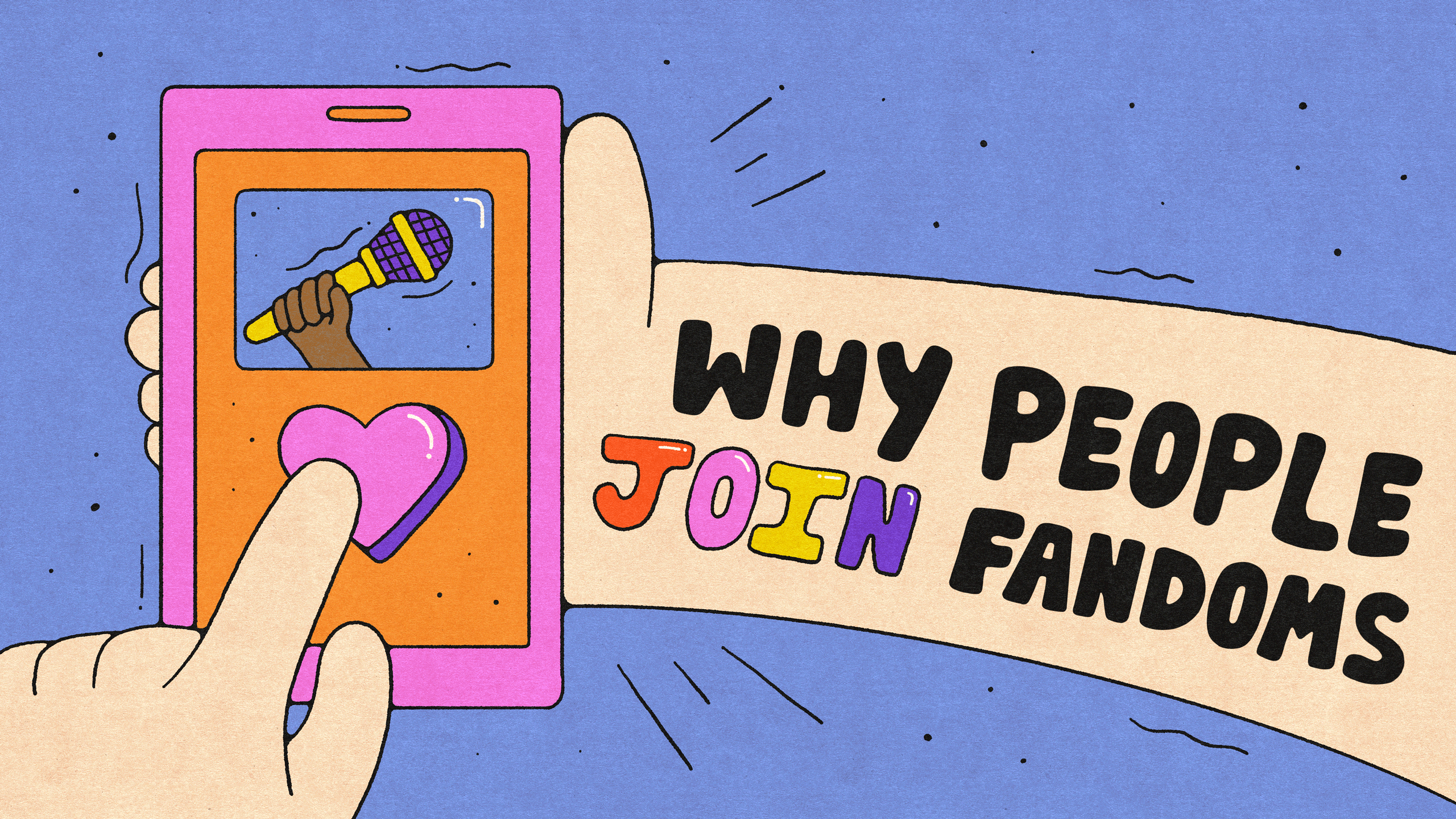

Today, being a fan is just as much about finding yourself as it is about finding your people. Nearly 90% of surveyed respondents in the "Anatomy of Hype” report said that they share their passions and fandoms with other people in their life, and half of fans agreed that their fandom provides them with a sense of community. At the same time, identity, empowerment and escapism are just as important when fans join new fandoms.
Fluid fans pick the aspects of community that work for them, like participating in chat groups about the latest Zelda game, The Legend of Zelda: Tears of the Kingdom, when it adds value to their life. By doing this, fans have removed the rigidity that once defined fandoms and they are crafting an experience that best suits their individual needs.
This is indicative of a shift in focus that emphasizes the fan rather than the fandom.
At the core, people join fandoms to gratify a need for entertainment and escape. They tap into a variety of fandoms, such as music, video games, sci-fi and fantasy, streetwear and sneakers, and professional sports to indulge different parts of their identity.
If someone wants to update their fashion sense, for example, they might join a Supreme fandom to stay in the know about the trendiest streetwear. If they’re also interested in chatting with fellow Lord of the Rings fans, they might join a fantasy fan group so they can discuss their favorite books and movie adaptations with others. Whatever their reason, they expect to be able to do so smoothly, seamlessly and on their own time and terms.
Now, fans can interact with fandoms across a variety of touchpoints. A makeup enthusiast might closely follow beauty news outlets to feel informed and excited about upcoming products, while also tuning into their favorite beauty influencer’s livestreams to socialize and get inspiration.
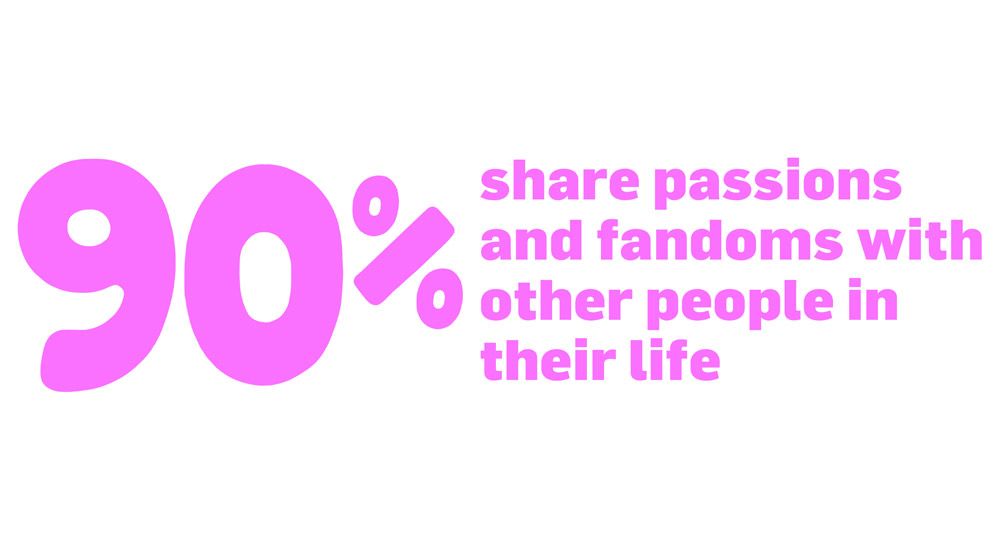
This marks another opening for marketers to enter fandoms, depending on which channel works best for them.
One way into fandoms is to appeal to a love of learning. This is possible with short-form video content, which is digestible and shareable, as well as long-form video content, which allows the viewer to dig in deeper.
Long-form video services offer viewers the opportunity to pause, increase playback speed or translate to the language of their choosing. And livestreaming services like Twitch, which is designed for interaction, give fans the opportunity to have curated experiences and learn in real time from influencers and experts related to their fandom.
A Twitch viewer can learn to play a song alongside a musician on a livestream, for example, while asking questions about chord progressions and receiving answers in real time. During the livestream viewers can also share their support by cheering on a musician as they perform their favorite song. These kinds of features can help fans feel truly invested and included in their fandoms as they engage with their passions in a live and unedited fashion.
Being able to tune in to so many touchpoints in so many different ways means fans can feel a sense of community however they see fit—whether that involves interacting directly with other fans or taking a less direct approach, yet still feeling a strong sense of belonging. This approach to community can be seen in the way fans use different channels—often less for socializing and more for entertainment, learning and discovery.
Today, being a fan is just as much about finding yourself as it is about finding your people. Nearly 90% of surveyed respondents in the "Anatomy of Hype” report said that they share their passions and fandoms with other people in their life, and half of fans agreed that their fandom provides them with a sense of community. At the same time, identity, empowerment and escapism are just as important when fans join new fandoms.
Fluid fans pick the aspects of community that work for them, like participating in chat groups about the latest Zelda game, The Legend of Zelda: Tears of the Kingdom, when it adds value to their life. By doing this, fans have removed the rigidity that once defined fandoms and they are crafting an experience that best suits their individual needs.

This is indicative of a shift in focus that emphasizes the fan rather than the fandom.
At the core, people join fandoms to gratify a need for entertainment and escape. They tap into a variety of fandoms, such as music, video games, sci-fi and fantasy, streetwear and sneakers, and professional sports to indulge different parts of their identity.
If someone wants to update their fashion sense, for example, they might join a Supreme fandom to stay in the know about the trendiest streetwear. If they’re also interested in chatting with fellow Lord of the Rings fans, they might join a fantasy fan group so they can discuss their favorite books and movie adaptations with others. Whatever their reason, they expect to be able to do so smoothly, seamlessly and on their own time and terms.
Now, fans can interact with fandoms across a variety of touchpoints. A makeup enthusiast might closely follow beauty news outlets to feel informed and excited about upcoming products, while also tuning into their favorite beauty influencer’s livestreams to socialize and get inspiration.

This marks another opening for marketers to enter fandoms, depending on which channel works best for them.
One way into fandoms is to appeal to a love of learning. This is possible with short-form video content, which is digestible and shareable, as well as long-form video content, which allows the viewer to dig in deeper.
Long-form video services offer viewers the opportunity to pause, increase playback speed or translate to the language of their choosing. And livestreaming services like Twitch, which is designed for interaction, give fans the opportunity to have curated experiences and learn in real time from influencers and experts related to their fandom.
A Twitch viewer can learn to play a song alongside a musician on a livestream, for example, while asking questions about chord progressions and receiving answers in real time. During the livestream viewers can also share their support by cheering on a musician as they perform their favorite song. These kinds of features can help fans feel truly invested and included in their fandoms as they engage with their passions in a live and unedited fashion.
Being able to tune in to so many touchpoints in so many different ways means fans can feel a sense of community however they see fit—whether that involves interacting directly with other fans or taking a less direct approach, yet still feeling a strong sense of belonging. This approach to community can be seen in the way fans use different channels—often less for socializing and more for entertainment, learning and discovery.
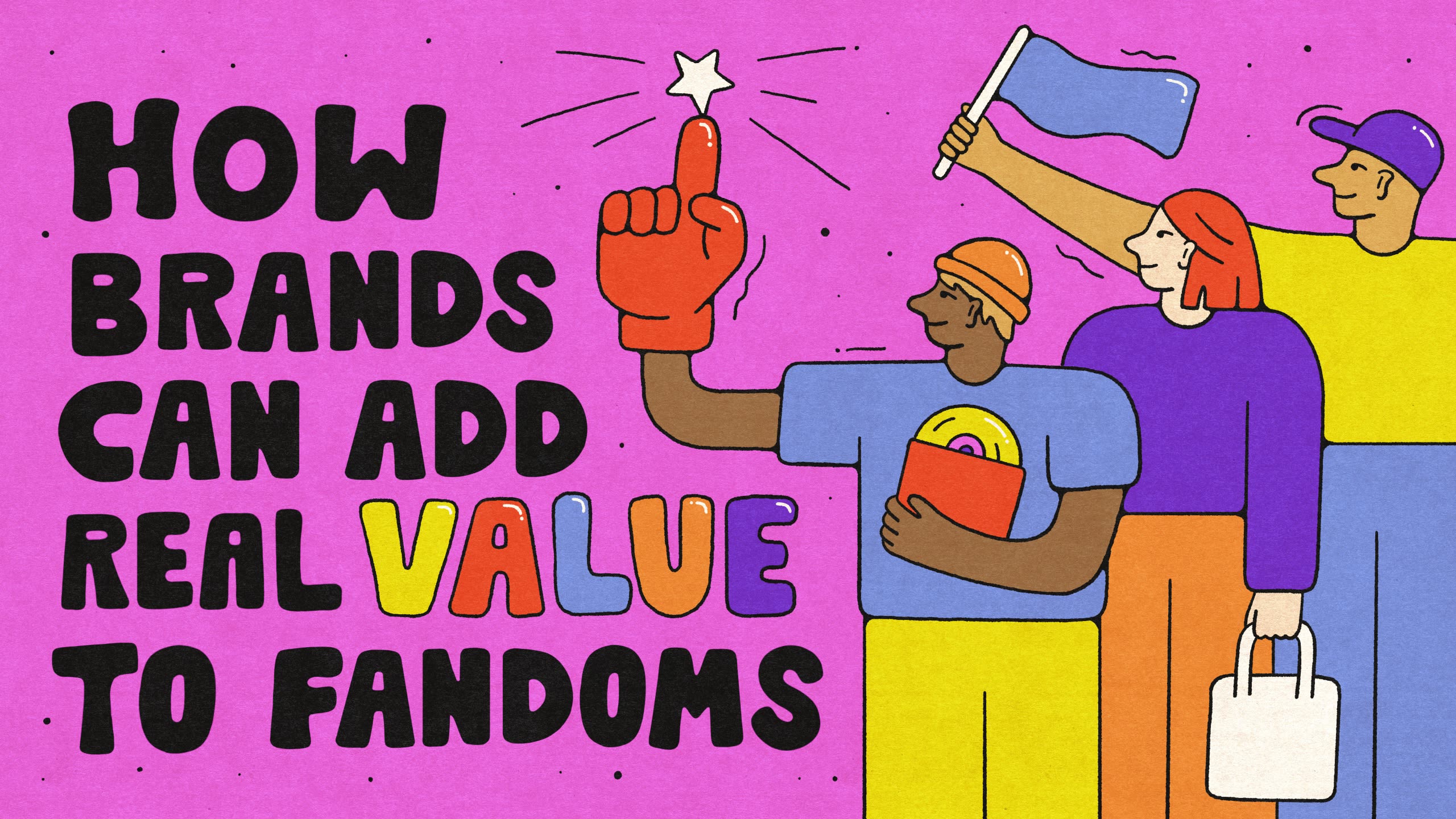

Another way fandoms have evolved? Fans are open to brands joining the conversation—as long as they add positive value.
Content overload has made people savvier and more selective about what they choose to consume. They understand influencer marketing and branded content, and they’re willing to support these brand participations within their fandoms when they’re done right. In fact, nearly two-thirds of surveyed respondents report that they enjoy seeing brands sponsoring or creating content related to their fandoms, according to the "Anatomy of Hype.”
Conversely, when brands misstep, they risk disrupting the most important part of the fan experience: the escape into their passion. When brands get it wrong, fans are impacted—they recall moments when ads and brands take over their fan spaces and negatively affect their authenticity.

The good news is that the fan landscape is open to many brands and is full of opportunities as people of all ages and identities increasingly engage with fandoms. To get started, be sure your brand is doing the following:
Engage casually
Gain a better understanding of what excites fans, how different types of fans participate, what the latest trends in the fandom are and how much these fans are willing to spend on their passions. Fans want to see brands experiment with different forms of media to communicate, explore a variety of channels and services to keep fans connected, and collaborate with related content to foster organic reach. And of course, become fluent in their language to truly speak to these fans.
Become active in fandoms
Fans who like to participate more actively in their fandoms are going to events, meeting up with other fans and frequently spending money on their fandoms. To engage fans at this level, a brand must take on a more participatory role. Fans want to see brands sponsor content and events, offer exclusive opportunities to fan communities, give back to the community, and organize meetups for fans to connect with their favorite icons, creators, influencers and celebrities.
Get creative
Fans love when brands offer them outlets and opportunities to share their creative ideas and content. Brands should uncover ways to earnestly contribute to fandoms, including coming up with their own original content and producing fan merchandise. They should also provide resources to help fans create content and foster fan-created communities.
Experiment across channels
People use multiple social and digital channels daily, so testing your appeal across touchpoints can be very useful. Just don’t expect each one to have the same effect. Home organization fans may like your raw and snappy “homeowner problems” short-form videos, but prefer more aspirational, aesthetic cleaning routines shared by their favorite cottagecore streamer on Twitch, where long-form, livestreamed content is the norm.
Focus on the value add
Ask yourself: Is this content useful or is it providing entertainment? A good way to think of it is that useful content appeals to learning while entertaining content appeals to emotions. Consider the different reasons someone might join a classic video game fandom—for nostalgia, for example—and see how you can create content that plays to that. Also, don’t just push a product or a brand message—find a fandom that aligns with your brand values and ethos. Successful brands focus on showing genuine support and interacting with what the fandom cares about.
Practice inclusivity
Modern fandom is inclusive and permits anyone to enjoy their passions the way they want to. So, not only should you take the time to learn about a fandom topic, but also ensure your content speaks to fans of all levels, not just hardcore ones.
Another way fandoms have evolved? Fans are open to brands joining the conversation—as long as they add positive value.
Content overload has made people savvier and more selective about what they choose to consume. They understand influencer marketing and branded content, and they’re willing to support these brand participations within their fandoms when they’re done right. In fact, nearly two-thirds of surveyed respondents report that they enjoy seeing brands sponsoring or creating content related to their fandoms, according to the "Anatomy of Hype.”
Conversely, when brands misstep, they risk disrupting the most important part of the fan experience: the escape into their passion. When brands get it wrong, fans are impacted—they recall moments when ads and brands take over their fan spaces and negatively affect their authenticity.

The good news is that the fan landscape is open to many brands and is full of opportunities as people of all ages and identities increasingly engage with fandoms. To get started, be sure your brand is doing the following:
Engage casually
Gain a better understanding of what excites fans, how different types of fans participate, what the latest trends in the fandom are and how much these fans are willing to spend on their passions. Fans want to see brands experiment with different forms of media to communicate, explore a variety of channels and services to keep fans connected, and collaborate with related content to foster organic reach. And of course, become fluent in their language to truly speak to these fans.

Become active in fandoms
Fans who like to participate more actively in their fandoms are going to events, meeting up with other fans and frequently spending money on their fandoms. To engage fans at this level, a brand must take on a more participatory role. Fans want to see brands sponsor content and events, offer exclusive opportunities to fan communities, give back to the community, and organize meetups for fans to connect with their favorite icons, creators, influencers and celebrities.
Get creative
Fans love when brands offer them outlets and opportunities to share their creative ideas and content. Brands should uncover ways to earnestly contribute to fandoms, including coming up with their own original content and producing fan merchandise. They should also provide resources to help fans create content and foster fan-created communities.
Experiment across channels
People use multiple social and digital channels daily, so testing your appeal across touchpoints can be very useful. Just don’t expect each one to have the same effect. Home organization fans may like your raw and snappy “homeowner problems” short-form videos, but prefer more aspirational, aesthetic cleaning routines shared by their favorite cottagecore streamer on Twitch, where long-form, livestreamed content is the norm.
Focus on the value add
Ask yourself: Is this content useful or is it providing entertainment? A good way to think of it is that useful content appeals to learning while entertaining content appeals to emotions. Consider the different reasons someone might join a classic video game fandom—for nostalgia, for example—and see how you can create content that plays to that. Also, don’t just push a product or a brand message—find a fandom that aligns with your brand values and ethos. Successful brands focus on showing genuine support and interacting with what the fandom cares about.
Practice inclusivity
Modern fandom is inclusive and permits anyone to enjoy their passions the way they want to. So, not only should you take the time to learn about a fandom topic, but also ensure your content speaks to fans of all levels, not just hardcore ones.
About Twitch Ads
Launched in 2011, Twitch is an interactive livestreaming service and global community that comes together every day to create unique, live and unpredictable experiences from the interactions of millions. It brings the joy of co-op to everything, from casual gaming and world-class esports to anime marathons, music and art streams. Twitch also hosts TwitchCon, where tens of thousands of people come together to celebrate and connect with others who share their interests and passions.
Illustrations by Bailey Crouch


 Built with Shorthand
Built with Shorthand





